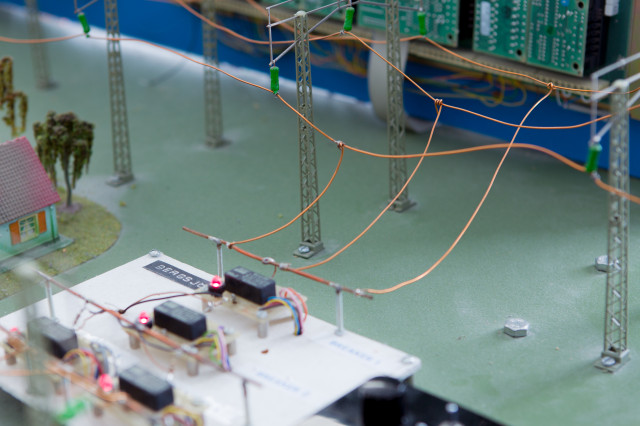- Introduction to radio communication, the history of radio and its development, the radio frequency spectrum.
- Radio wave propagation and modeling, free space propagation model, plane earth model, radio wave reflections and diffractions.
- Antenna systems for wireless communication.
- Radio link design: path loss modeling and link budget calculations.
- Representation of radio communication signals and systems.
- Radio channel modeling: time/frequency domain characterization and representation of fading multi-path channels.
- Methods for dealing with fading multi-path channels. The principle of diversity in wireless communication, combining methods.
- Introduction to wireless networks. Multi access methods, principle of frequency reuse and channel allocation. Elementary capacity analysis of wireless networks.
IK2507 Wireless Communication Systems 7.5 credits

This course provides a foundational understanding of radio communication principles and techniques, making it ideal for those looking to build a strong base in wireless systems. Through a combination of theoretical knowledge and practical applications, you’ll gain insights into the core components of wireless communication, from radio wave propagation to network planning.
Whether you’re a student entering the field or a professional looking to solidify your foundational knowledge, this course provides the skills and understanding needed to design and analyze effective wireless communication systems.
Information per course offering
Choose semester and course offering to see current information and more about the course, such as course syllabus, study period, and application information.
Course syllabus as PDF
Please note: all information from the Course syllabus is available on this page in an accessible format.
Course syllabus IK2507 (Spring 2026–)Content and learning outcomes
Course contents
Intended learning outcomes
After passing the course, the student should be able to
- characterize multipath fading for radio channels in terms of Doppler spectrum, coherence time, time spread and coherence bandwidth
- distinguish the difference between large-scale fading and small-scale fading
- describe and explain the effects of fading multi-path channels on the link performance of wireless communication systems
- account for possible solutions to the problem of signal fading in wireless communication links
- describe different types of diversity and how they improve performance for mobile radio channels
- apply radio wave propagation models and design basic radio communication links with respect to signal-to-noise ratio and outage probabilities with special emphasis on propagation models for mobile and portable wireless communications
- plan and analyze simple wireless networks in terms of coverage and capacity
- independently acquire knowledge of the latest in research and development for wireless systems.
Literature and preparations
Specific prerequisites
Knowledge in signals and systems, 4 credits, corresponding to completed course II1303/EQ1110/EQ1120/EQ1100/CM2013/HF1011/SD2125 or completed part TEN1 in IK2560.
Knowledge in calculus in one variable, 7,5 credits, corresponding to completed course SF1624/SF1672/SF1685.
Knowledge in linear algebra, 7,5 credits, corresponding to completed course SF1624/SF1672/SF1684.
Knowledge in probability theory and statistics, 6 credits, corresponding to completed course SF1910-SF1924/SF1935.
Knowledge in English corresponding to completed upper secondary course English B/6.
Literature
Examination and completion
Grading scale
Examination
- TEN1 - Examination, 6.0 credits, grading scale: A, B, C, D, E, FX, F
- LAB1 - Laboratory Work, 1.5 credits, grading scale: P, F
Based on recommendation from KTH’s coordinator for disabilities, the examiner will decide how to adapt an examination for students with documented disability.
The examiner may apply another examination format when re-examining individual students.
If the course is discontinued, students may request to be examined during the following two academic years.
Examiner
Ethical approach
- All members of a group are responsible for the group's work.
- In any assessment, every student shall honestly disclose any help received and sources used.
- In an oral assessment, every student shall be able to present and answer questions about the entire assignment and solution.
Further information
Course room in Canvas
Offered by
Main field of study
Education cycle
Supplementary information
In this course, the EECS code of honor applies, see: http://www.kth.se/en/eecs/utbildning/hederskodex.